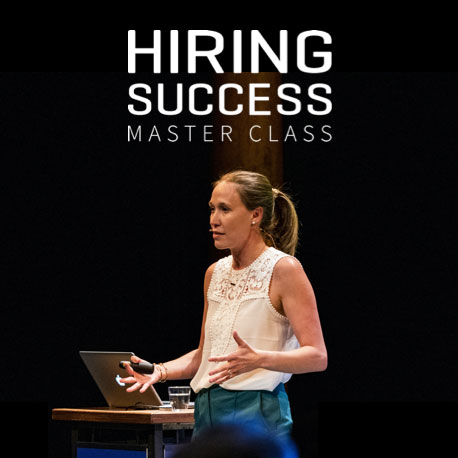The shifting landscape of 2020 has touched every aspect of our society. The world of business is no different. How, why, and even if we can do business has been questioned by organizations around the world this year, so it comes as no surprise that processes and priorities have changed.
Table of Contents
- The benefits of looking internally to fill roles
- The challenges of internal hires
- How to create a culture of internal mobility today
As hiring freezes swept like a Disney spell over companies in recent months, internal career mobility increasingly cropped up in conversations with our customers as a hot topic. With no plans to hire new roles, but teams forced to quickly recalibrate, the benefits of having a culture of internal career mobility seem to be a no-brainer. And yet, it’s more difficult to implement than it seems. In this article we’ll explore why it’s necessary, especially right now, to have internal mobility as part of your talent attraction and engagement strategy. Additionally, we’ll share tips to overcome the common pitfalls of establishing one in your organization.
The benefits of looking internally to fill roles
While often overlooked, there are many reasons why hiring internally will ultimately be easier, faster and more successful for open positions.
First up, retention. Are you having trouble with staff attrition? Your lack of internal opportunity could very well be the reason why. Global Talent Monitor’s report on workforce activity stated that future career development was a key driver of employee attrition, with 40% of people citing that as their main reason for leaving. Bumping up your internal career mobility is an elegant and obvious solution.

Alongside that, if we consider that outside hires take up to three years to perform as well as internal hires in the same job, by hiring someone from within your ranks, you’ll also have your hiring needs met much faster. Throw in the fact that your inside hire is already a confirmed culture fit, and it’s safe to say we have a home run. Right?
The challenges of internal hires
If only it were so simple. Internal career mobility, like many “great on paper” ideas, is a little trickier to execute in reality. While it can vary from organization to organization, many companies have systems in place which inherently discourage internal mobility.
For example, oftentimes HR will contact managers of potential candidates first, who—armed with veto rights—will squash the move to save their team. Similarly, hiring managers are frequently just handed internal applicants, without them being shortlisted or curated by the recruiters. This casual handling of internal candidates automatically (if subconsciously) pits them below external hires and encourages them to be handled less seriously.
And what about from a candidate’s point of view? While we’ve already explored that they are functioning in the role faster, it’s also been proven that they are likely to take seven years as long to earn what an outside hire would have been paid for the same role. So simply put, the financial incentive is to leave, rather than move internally.
What’s changed this year?
With the advent of COVID-19 around the world, hiring new employees suddenly was out of the question for many companies. Nonetheless, the hiring need was still there. While many organizations were forced to downsize by letting people go, others needed to move people around in order to remain functional.
IKEA was a great example of this. With less need on their cash registers during lockdown, requirements in warehouses rose dramatically as online purchases soared. This reconfiguration of their workforce showed that not only were people adaptable, but doing so helped the business.

Internal career mobility, for many, helped companies hold onto staff as well as remain operational. It’s all well and good saying internal career mobility is the answer, but how can you overcome the previously mentioned challenges?
How to create a culture of internal mobility today
Hiring internally, and doing it well, is more than a recruitment project. It must be owned by the HR department, and supported with senior management buy-in. In order to get this buy-in, however, it’s important to adhere to the following best practices:
1. Share all jobs internally
Does the recruitment in your company happen autonomously? Do internal departments even know about which roles are being hired for? Making sure that all roles are posted and aggressively marketed for internally as well as externally will illuminate the possibility of internal candidates.
2. Handle internal candidates confidentially
An internal move could be the best move for the individual, the team and the company at large. But it isn’t without the possibility of politics getting in the way. Managers, understandably, won’t want to lose great members of their team, but they shouldn’t stop moves which ultimately are better for the company and the individuals. Similarly, bad blood could arise if an internal candidate is unsuccessful in their application to move. Guaranteed confidentiality can solve both of these potential hiccups.
3. Internal applicants should be given priority

Too often, internal applicants are handled casually and dismissively. This attitude needs to be addressed, both by recruiters and hiring managers. When internal career mobility becomes a focus, the priority of applicants must change as well.
4. Inform managers only if applicants accept a position
Managers will need to be informed, that much remains the same. However, the point at which they are informed is later, meaning they can’t inhibit or prevent a move from happening.
5. Recruiters should be allowed to approach internal staff
If a hiring manager were to tell you that Susan in Marketing would be your ideal candidate, then why not approach Susan in Marketing! Recruiters need to include looking within the four walls of the office in their search for the perfect candidate.
Adopting these best practices won’t happen overnight. In order for them to truly stick and be effective, introduce them in phases. Start marketing your roles internally, as you craft a streamlined process for internal candidates. Encourage your recruitment team to create vetted shortlists for internal and external candidates.
Like any new process, it’ll take time, but the myriad benefits—better retention, lower attrition, happier staff, and faster ramp up times for new hires—all point to one end: internal career mobility should be strongly considered by businesses serious about achieving hiring success.

 Enroll in the Master Class & earn 6 SHRM credits
Enroll in the Master Class & earn 6 SHRM credits